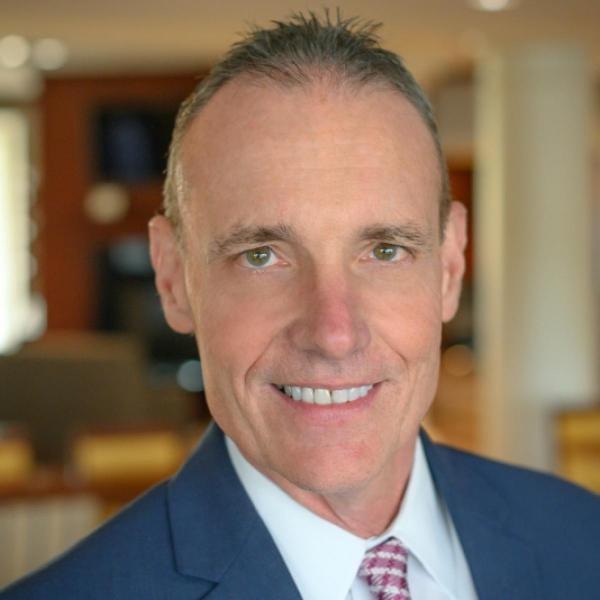By William (Bill) J. Kelly, President and CEO of the CAIA Association.
“What would the client think?” The five most powerful words I learned from my mentor Desmond J. Heathwood in the formative years of my financial services career. A derivative approach often goes something like this: “How would it look on the front page of the WSJ?” but I don’t particularly like that standard. It seems to imply the ability to find the deepest recesses of a gray area where the advantages are found in the fine print of an offering document and opined on by a soulless lawyer named Loophole. That will never be a #clientfirst standard. Today, we are proud to introduce A Renewed Professionalism to answer that bell.
Share of wallet or size of the pie are also standards used to describe what often seems to be an asset gathering rather than a value creation stage of growth in the private markets. Often the pie is treated more like a doughnut where the forgotten hole in the middle, is the client. We must never allow that to happen and that is why the cultivation of a Transparent and Client-Centered Ethos stands as table-stakes to even consider calling yourself a fiduciary.
The Tower of Babel showed quite literally the biblical proportions of what happens when you are operating without a plan when working with your partners. Reaching for the heavens (just like unrealistic financial goals) was a flawed premise from the get-go, but the absence of planning, and discussions about risk tolerance, long-termism, the liability side of the balance sheet, along with a complete understanding of causes and cares that the investor holds dear, will have the same disastrous result on a client’s financial plan. Let’s always Start with Purpose-Driven Portfolio Building Blocks.
Great wealth can make a huge difference under a Gates/Buffett Giving Pledge, but it does not mean that any one of us, outside of the rarified air of the billionaire’s club, does not aspire (and have the ability) to make our planet and humankind simply better for the next generation. Our clients’ instincts come from the soul too, and their broader interests to allocate both the value of their time and money must equally be taken into consideration during a cogent planning process. Diagnose Your Client’s Values and Embed (Their) Tailored Sustainability Factors in Your Process.
Democratization of access to private market products is inevitable for investors of all sizes. When forced to manage a trifecta (market, inflation and longevity) of complicated risks, it is simply unsustainable to provide two flavors of risk premia, while restricting access to the new home of capital formation and value creation within what is now the mostly walled garden of the private markets. The investor wants, needs, and deserves access as these walls break down, but our profession must avoid the simple trap of giving the client what they want versus what they truly need. We saw a tsunami of offerings coming to market post the GFC under the client-soothing moniker of liquid alts. Taking very sophisticated strategies that are meant to be largely unconstrained and held for the long-term as part of an overall asset allocation plan, and then jamming them into a highly regulated structure with next day liquidity was never going to end well. Treat Liquidity as a Feature Rather Than a Benefit.
In our seminal piece Portfolio For the Future, Roger Urwin spoke so eloquently of the need to root your firm’s values squarely within a fiduciary mindset. The clever marketeer will always drop this into a mission statement because it so easy to do and looks great on a website or a brochure. However, the “saying-doing” gap is defined by what you ‘do’ when no one is looking, and what your culture exudes beyond the clever words above your reception desk. That is ultimately the acid-test as to who is on the side of ‘doing’ thereby embedding that fiduciary mindset within the investment policy and process. Identify and Capitalize on Your Firm’s Edge.
Another inevitable by-product of democratization is a less sophisticated investor coming to an advisor’s platform that is hopefully long on integrity and skill but will very often not have the full buffet of offerings that the client will need to build a sustainable long-term portfolio. This means that said advisor in turn, will need to allocate their client’s assets to other third parties. That should never mean even the slightest degradation of standards and due care, especially when Loophole, Esq says it might be okay. Invest with Integrity and Allocate to True Partners.
These six Guiding Principles are for all of us to implement. Weak links in that chain can quickly cause a contagion that will undermine the very sacred trust our clients place with us. You should tolerate nothing less from your firm and colleagues, and also from your competitors. They too are important partners for a better and more client-centric profession and that should never be a competitive edge.
That is what your client thinks.
About the Author:
William (Bill) J. Kelly, CEO of the CAIA Association, is an asset management industry veteran with extensive managerial and boardroom experience gained through successive CFO, COO, CEO and Independent Board director roles.

He has led both start-ups and full scale global organizations. Bill is the former CEO of Robeco Investment Management, a subsidiary of the Netherlands-based global asset management organization with over $200 billion of assets under management, where he oversaw all aspects of United States business, including portfolio management, distribution and product development. He also was responsible for the strategic growth, introduction, and positioning of new managed products in the US and Europe, including alternative investments. Bill was a founder and former CEO of Boston Partners Asset Management, a self-funded partnership enterprise, which became one of the industry’s largest and most successful start-up money management organizations. Previous to that, he served as CFO of The Boston Company Asset Management and earlier in his career held various positions at Bear Stearns and was an auditor at PricewaterhouseCoopers.




